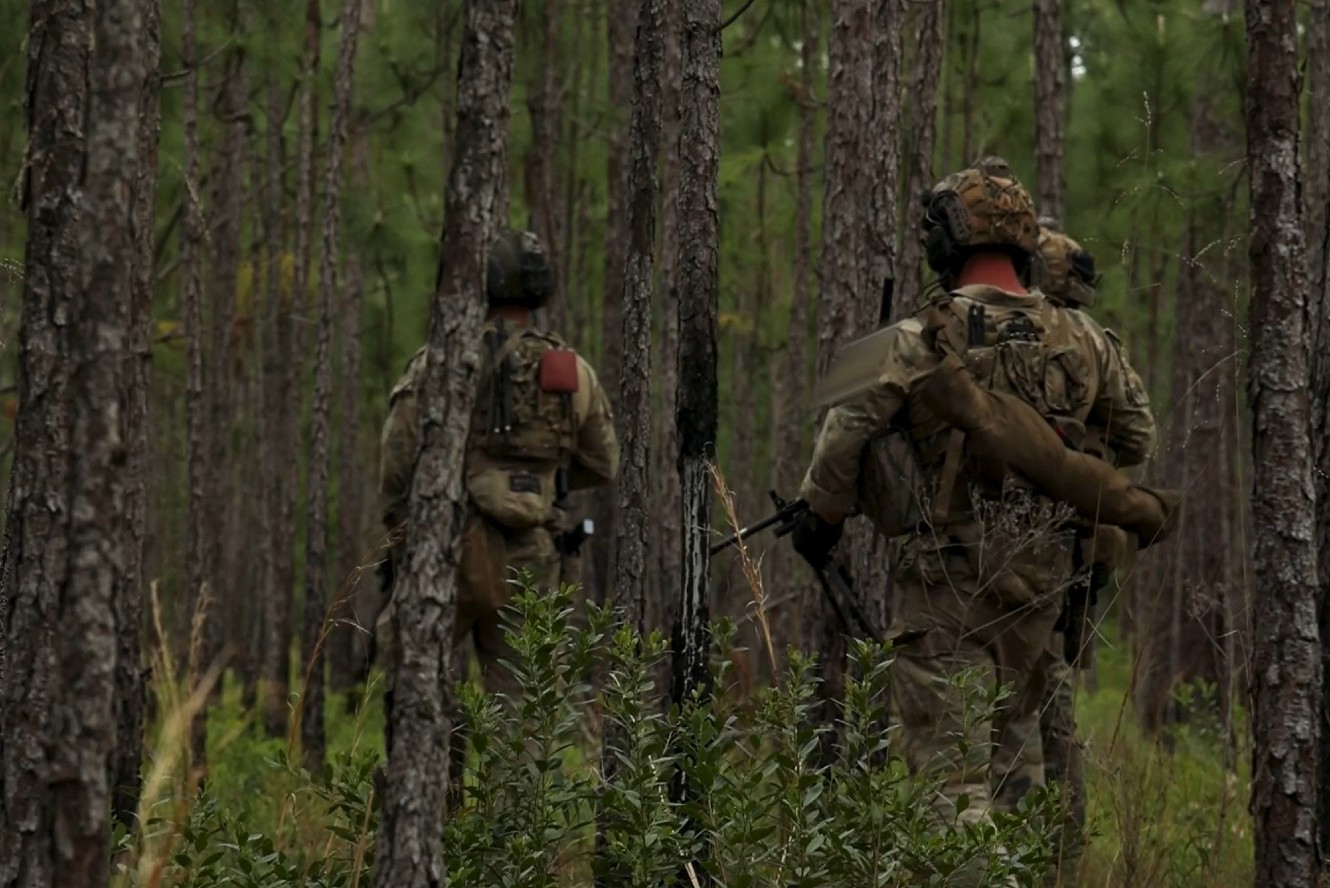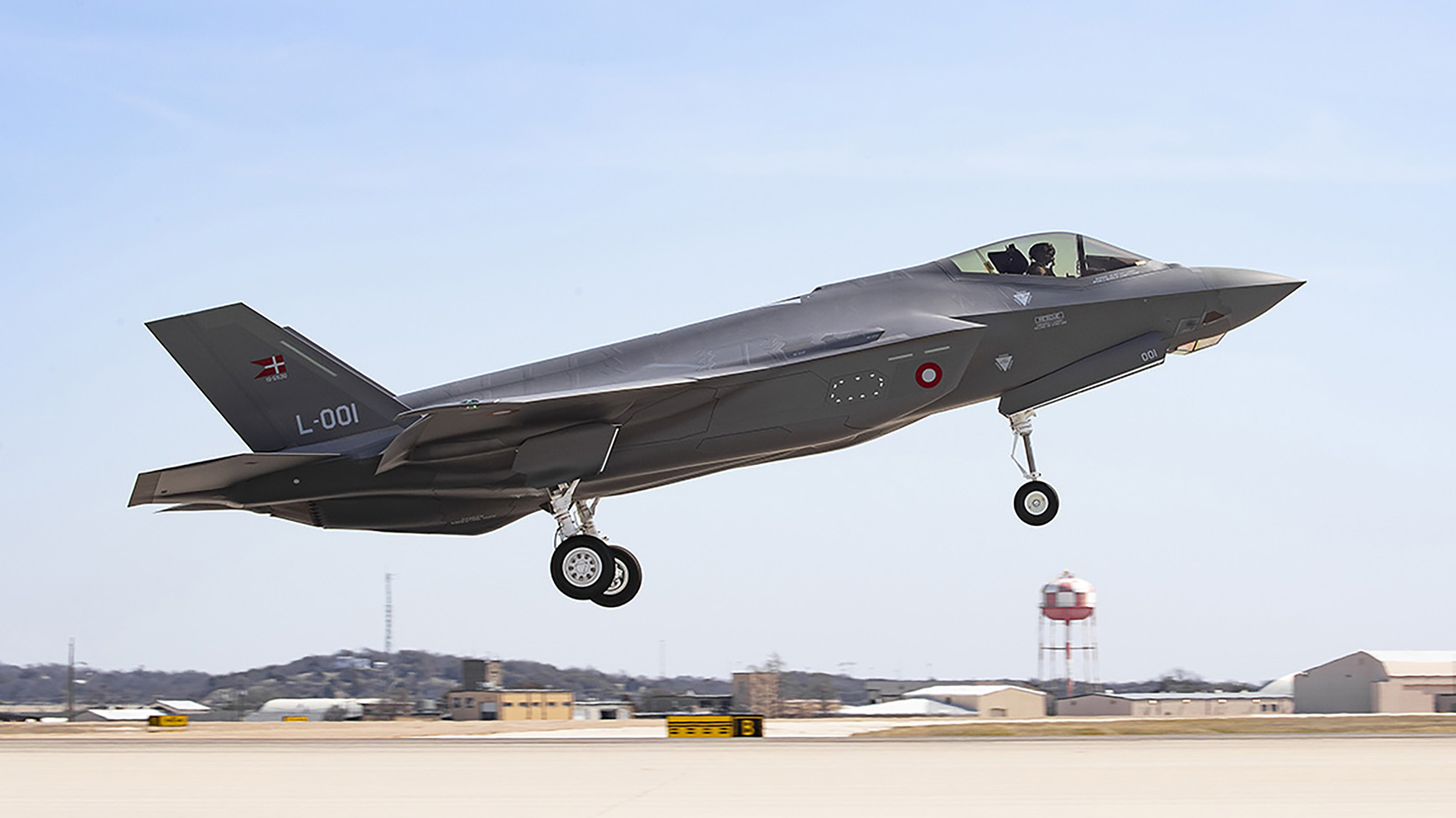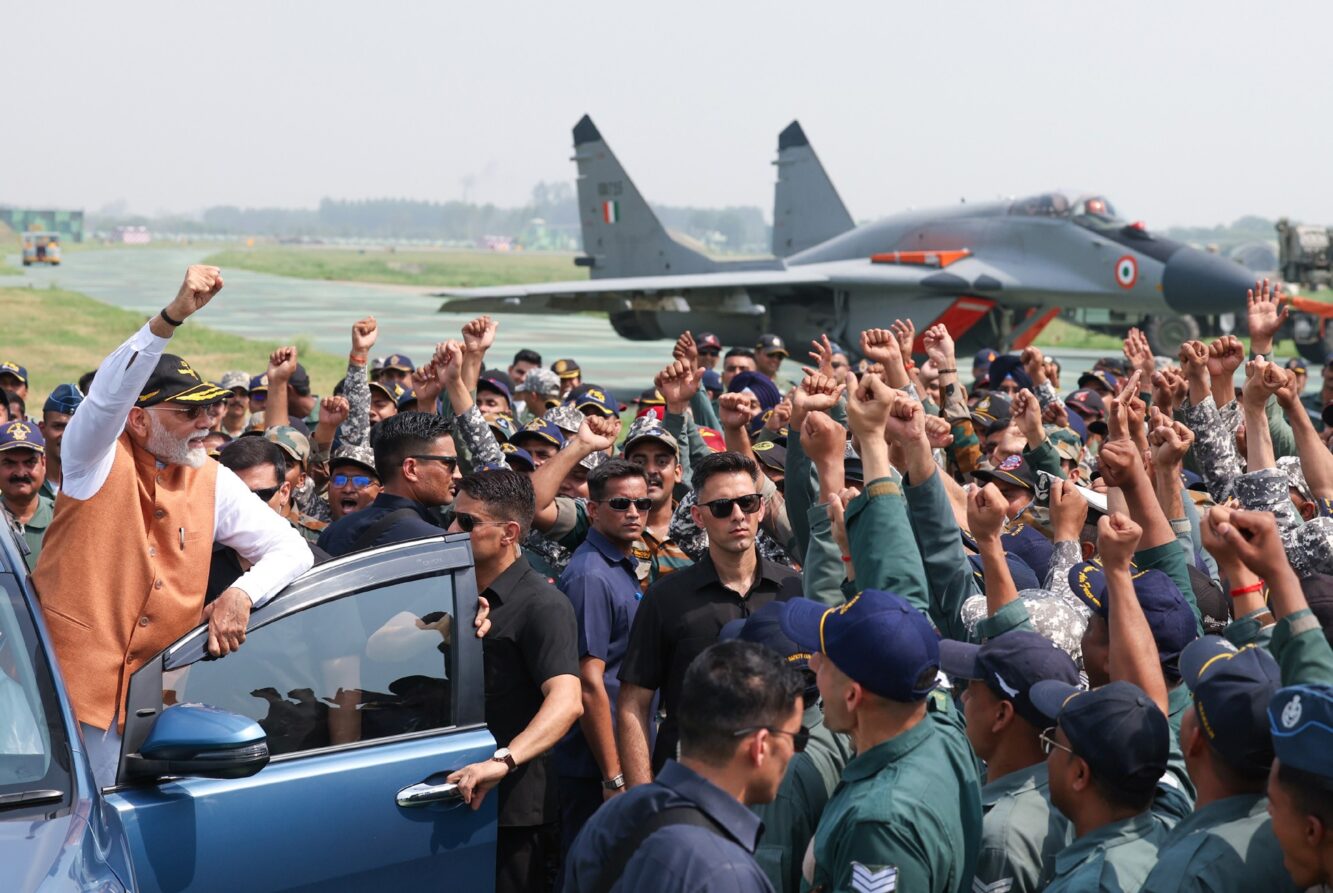EXCLUSIVE: Allvin says Air Force must grow, even at ‘expense’ of other services
In an interview with Breaking Defense, Air Force Chief of Staff Gen. David Allvin argues the Air Force is most apt for an Indo-Pacific fight relative to other services.


Air Force Chief of Staff Gen. David Allvin delivers a keynote address at the 2025 Apex conference at National Harbor, April 23, 2025. (U.S. Air Force photo by Andy Morataya)
WASHINGTON — America’s shifting focus towards countering China demands increased investment in air power — which may ultimately require taking resources from other military services who are not as well suited to the challenge, according to Air Force Chief of Staff David Allvin.
In an exclusive May 16 interview with Breaking Defense at the Pentagon, Allvin took the unusual step of directly contrasting the capabilities of his service against those of the other military branches, as part of his argument that the Air Force is better equipped to lead in a conflict in the Indo-Pacific.
He also said an eight percent reallocation of the DoD’s budget is an opportunity to “break out of the inertia” that has dominated military budgeting in the past, with the clear implication that the Air Force could grab a greater share of spending as a result.
Asked specifically if the threat environment means the Air Force needs to be prioritized, even if that must come at expense of other services, Allvin replied, “That would be my case.”
The goal “is not for the Air Force to grow at the expense of others necessarily,” Allvin said. But, “That may be the outcome.”
Todd Harrison, a senior fellow at the American Enterprise Institute and longtime budget expert, told Breaking Defense, “I think what we’re seeing with Allvin’s public comments and some of the comments from the other services as well, is that the knives are out.”
Despite the Trump administration promising a trillion-dollar FY26 Pentagon budget, the actual base budget — excluding reconciliation spending — “goes down in inflation-adjusted dollars” compared to the last Biden-era request.
“They’re fighting amongst one another for who’s gonna take the biggest cuts,” Harrison said of the services.
Who Could Lose Out?
Throughout the interview, Allvin was careful to not denigrate the role of the Navy, Marine Corps or Army in the Pacific. But several of his comments likely gave insight into the discussions the general is having behind the scenes, at a time when Pentagon leadership, under Defense Secretary Pete Hegseth, seems willing to break traditional spending patterns.
In Allvin’s words, the budget shake-up is a chance for a “reset” that could “reshape the entire Joint Force,” where he explained officials can now evaluate “how we proportion across the Department of Defense.” That includes the possibility of shifting more resources to the Air Force. (Traditionally, the budget has been roughly divided into thirds split between the military departments, although Air Force advocates have long argued this shortchanges the service because the Air Force’s portion includes money that passes through to outside organizations.)
The result of the Hegseth directive, he added, “could turn out to be different shares of the budget than it was last year. But the key is, it’s supporting the Defense Department’s and the president’s priorities.”
Where could money for the Air Force come from? Again, Allvin avoided presenting any specifics, but there were some signs that the service is at least eyeing relatively slower-moving surface forces — such as ground troops and ships — as potential sources.
For instance, the Air Force chief noted that “another area where air power really dominates is, we measure our ability to maneuver and move and get from A to B relative to the speed of sound, when some of our sister services are subject to the domains that they’re in, and so they do it more like the speed limit.”
“Once you’re in the heavy threat environment … the more agile you can be, the more you can move within that environment and stay survivable,” Allvin said, touting the Air Force’s Agile Combat Employment initiative that seeks to “disaggregate” forces by dispersing launch and recovery operations.
In contrast, he argued that doing the same is “a little bit more challenging for those on the surface and for the Navy.” And while he emphasized the Air Force is not “impenetrable” and has its own risks like ensuring air bases are survivable, he argued his service still has the edge.
RELATED: ‘Everybody’s going to have to figure this out’: Army, Air Force debate base defense amid new threats
All of the military services are “looking to do the same thing, which is survive enough to generate combat power within a high, dense threat environment,” he said. “And I think the Air Force has an advantage there, because we can disaggregate rapidly, and then we can aggregate for massive effects. And we can disaggregate again in a way that few other of the services can with that speed.”
Speaking to Breaking Defense after the interview with Allvin, an Air Force strategist was even more blunt, saying there are “probably places for reallocations to occur” and aiming the target squarely at the Army.
“If you’re looking for existential things that can really change the rules-based order, it’s things that you can see in the Pacific, and those things happen fast. The only way to get there is with the Air Force, and to some extent, the Navy,” the strategist, who was granted anonymity to speak freely, said.
“The Joint Force will be screaming for air and space superiority in any theater, but especially the Pacific,” the strategist added. “The Joint Force will not be screaming for ground forces to land and fight.”
The Argument For The Air Force
It’s not clear what each of the services’ fates may be in the finalized FY26 budget, but Allvin’s comments offer a window into tensions currently playing out behind the scenes of the Pentagon. They also come amid a series of large-scale changes at the Army, a clear signal that the Trump administration is open to more radical changes among the military services.
At the Army, Secretary Daniel Driscoll has said he would consider it a “success” during his term if a prime contractor shuts down in the event they don’t start operating more efficiently, a shot across the bow to traditional defense primes as the Trump administration embraces VC-backed startups like Anduril and Palantir. Allvin too pointed to the “reversal of the consequences of the Last Supper” — a reference to the consolidation of defense companies after the Cold War — and asserted the Air Force is well-positioned to exploit the changing industry dynamics.
Allvin argued the Air Force’s technology in next-generation programs like the F-47 fighter jet have “bake[d] in that agility.” Air Force platforms, he added, have a “uniqueness” in their ability to leverage “disruptive technologies” in a way that is “maybe only exceeded by those in space.”
The Air Force chief additionally made a pitch more or less squarely aimed at the White House, where the commander-in-chief is wary of prolonged foreign conflicts: Unlike the other services, he characterized airpower as something that can be used largely without requiring troops to be put in harm’s way, and which can then be withdrawn relatively quickly.
“If you want to send a clear message, you can send air power. You can do a strike, you can do humanitarian relief, whatever it is, you can send that message and then get right back into status quo ante, right?” Allvin said. “Whereas, if you’re going to do it with other forces, the Joint Force, you’re putting a lot of human life and resources there. And once you do that, you’re sort of entangled, and it’s tougher to disentangle from there.”
“I do believe, when you look at what the environment privileges and what it punishes, I think the Air Force provides so much more of what it privileges than what it punishes,” Allvin said. “I think that’s a value proposition that the nation can decide.”
Noting that the Indo-Pacific isn’t the only region American officials have to make military plans around, Harrison said, “I think we need a balanced force at the end of the day,” noting that while the Army needs to undertake “a lot of transformation” to account for modern challenges, the Air Force has its own issues like “serious basing challenges” and platforms like early warning aircraft that are vulnerable to enemy fire.
“Any rebalancing in the defense budget inherently means that there are winners and losers. And the losers get a vote,” Harrison said.




















































































































































